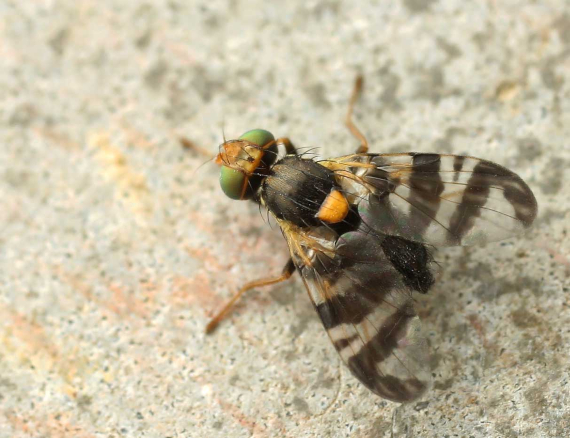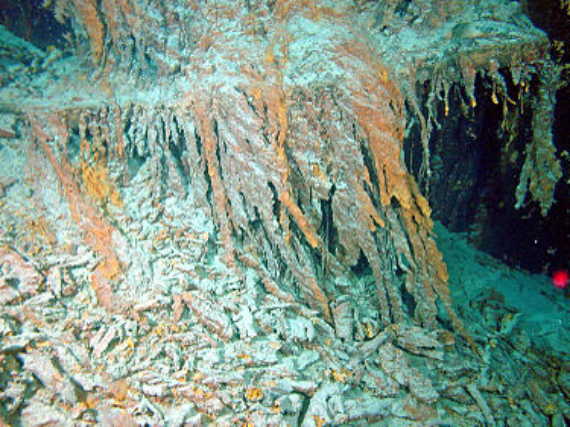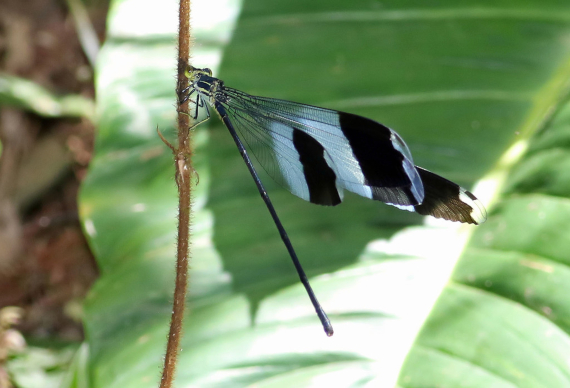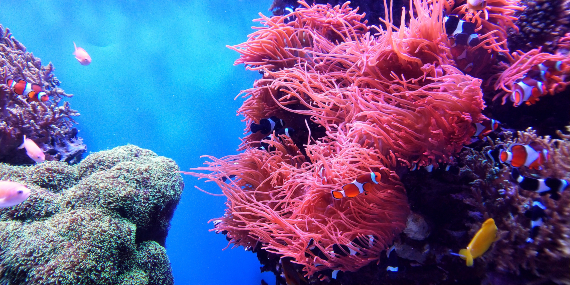For many scientists, activities developed by humans such as agriculture, livestock, hunting, fishing, industry, urbanization, deforestation, etc. are defining a new geological epoch: the Anthropocene. A time in which a mass extinction of species is under way and which some are saying will have a greater impact than the five mass extinctions that took place in previous geological eras.
But is it possible that human activities are also directly or indirectly promoting the origin of new species? And if so, will the appearance of these new species compensate in some way for the extinctions of others?
NEW HABITATS
Certain human activities have created new habitats that had not yet existed on Earth, which constitutes a situation that has allowed for new species or variants to appear.
The most “human” of environments are cities, towns and various urbanizations. Various animals ranging from insects to mammals, to amphibians, reptiles and birds, have penetrated them. And in several cases it has been found that the “urbanites” already show some differences with respect to those of nature. For example, sharper claws in reptiles, shorter wings in birds, and different behavior in mice. But almost in no case, for the moment at least, can it be said that they constitute a new species. Perhaps the clearest case in this regard is that of the mosquitoes that live in the London Underground. For them, it is argued that they already constitute a new species (Culex disturbus) for which they are physically, genetically, and ecologically separated, as well as in their reproductive behavior, from those of nature (Culex pipiens 1).

When we study the plants that have reached our cities, variants are beginning to appear with respect to those of nature. Thus, there are some that, to avoid losing offspring, begin to change their reproductive strategy by restricting the formation of seeds that are dispersed. And others with allergenic powers that increase this power while in cities. In areas where mining waste accumulates, plant variants that are resistant to the metals they contain begin to appear as well. Such is the case of plants of some species of the genus Mimulus (mono flower) where copper resistant variants have begun to appear 2.

On the other hand, agricultural and livestock activities can provide new habitats for some organisms and lead to the origin of new variants and even new species. For example, about 200 years ago in some areas of North America where only wild species of the Rosaceae family existed, another rosacea, apple trees, began to be planted. Turns out that in the wild rosaceae, especially in the majoletos (Crataegus), lived an insect belonging to the Genus Rhagoletis that carried out its life cycle in its fruits. When apple trees (Prunus) were introduced, which have a flowering and fruit maturation cycle different from those of wild rosaceae, some of these insects “jumped” and adapted to apple trees, being reproductively and genetically separated from their wild ancestors. In fact, for some authors, the Rhagoletis that live in apple trees constitute a different species than those that live in hawthorn trees 3.

The sea has also experienced human activities that have led to the appearance of “environments” that were not normally present in a natural way: shipwrecks, oil slicks, marine platforms, and the presence of plastics and their derivatives, etc. In such cases it has been found that associated with these new environmental conditions various organisms have appeared, ranging from bacteria to fungi and algae that constitute new species, and that sometimes are even new genera. For some, these new species and genera would not really be considered a “new” species; they could have already been present and not have fulfilled other functions, so as to not have been detected in other marine or terrestrial environments-the rhizosphere. But there are very striking cases, such as the bacterium that has colonized the wreck of the Titanic: Halomonas titanicae 4. This bacterium has a metabolism related to the steel of the ship’s hull, not including its existence in other marine or terrestrial environments. And some new species of bacteria that break down components of plastics must have appeared when plastics were invented 70 years ago.

HABITAT FRAGMENTATION
Normally, we talk about the negative effects that habitat fragmentation is having on biodiversity, which is caused by activities such as deforestation, land clearing, agricultural fires, and the construction of roads and railways, etc. But one thing to note is that in some cases these fragmentations may also be accelerating the origin of new species.
In the Anthropocene, as in any other epoch, there are many evolutionary processes of new species that have been and are underway in nature, but that have not reached full term. Today, by geographically or ecologically isolating the populations that are in the process of originating different species, the speciation process can actually be accelerated and completed. Such is what has happened with the giant damselfly of the Genus Megaloprepus of America. And it´s the fragmentation of Central America’s forests that is causing the separation into several species in what until recently was considered only one: Megaloprepus coerolatus. A speciation process to which the low mobility of this insect may be contributing 5. Likewise, the construction of roads is isolating diverse populations of mammals and promoting their genetic diversification.

HARVESTING SPECIES
Human activities have intentionally or unintentionally relocated many species outside of their natural range. And these movements have had various effects on speciation processes.
Thus, species outside their natural environment can engender different forms from which they originated. But, above all, a hybridization phenomenon can occur between native and invasive species. Normally these contacts between species do not give rise to viable hybrid organisms. And if they are, they usually do not have evolutionary continuity because they are sterile and cannot offer viable gametes. But sometimes in nature there can be processes that allow them to be fertile and create their own descendants that can produce different species from those that are initially hybridized. Such a hybrid speciation process has occurred in some coral formations where, by artificially putting two different species in contact, a third hybrid species has emerged.

Finally, it is still more frequent, especially in the case of plants, that when different species come into contact through human activity and form hybrids as a result, there are initial continuity problems due to gametes with abnormal chromosomal numbers. Due to this, their reproductive process is altered and gametes are formed in which the number of chromosomes is not reduced. Thus, viable organisms with chromosome numbers that are multiples of those of the original species can appear. For example, many polyploid hybrid species have been formed after the introduction in some areas of species of genera such as Helianthus (sunflowers), Tragopogon (“goatee”), Senetio (senecios), etc., hybridizing these foreign species with the autochthonous ones 6.
And in these isolated areas of species relocation, outside of their natural environments, it is necessary to consider that due to human activity it is possible that contact between various species of mammals, and even birds and reptiles, may lead to the origin of new types of viruses. In the case of viruses, it is not about species, but quasispecies and their multiple types of variants, mutations and strains. This is what has happened and can happen in the case of coronaviruses: that the contact between different animal species caused by human activity can put different coronaviruses of different species in contact with a specific species. And the presence of different coronaviruses of different species in a certain species, individual, or cell, can promote the genetic recombination between these different types, giving rise to new viruses with the power to infect the human species 7.
CONCLUSION AND OUTLOOK
Therefore, it can be said that various human activities can and have been able to originate new biological species, or that at least can initiate the processes of formation of such new evolutionary entities. The problem is knowing the intensity of such phenomena, and here is where there are different opinions. According to some authors, the formation of new species in the Anthropocene would not compensate for the large number of extinctions of others. For others, on the other hand, a significant number of species have been and are being formed since humanity activity began8. And for some, as occurred after the Triassic-Jurassic´s mass extinction, after the Anthropocene´s extinctions, a great wave of speciation is going to take place. This would be the future, to which new biological technologies can also contribute by de-extinctioning, cloning and editing species, which in many cases would be new or on their way to being.
BIBLIOGRAPHY
- Byrne, K. , Nichols, R.A. 1999. Culex pipiens in London Underground tunnels…Heredity, 82: 7-15.
- Mac Noi, M.R., Christie, P. 1983. Reproductive isolation as a pleitropic effect of copper tolerance in Mimulus guttatuss? Heredity, 50: 295-302.
- Feder, J.L. et al. 1988. Genetic differentiation between sympatric host races of the Apple maggot fly Rhagoletis pomonella. Nature, 336: 61-64.
- Sánchez-Porro, C. et al. 2010. Halomonas titanicae sp.nov. Int. Journal of Systematic and Evolutionary Microbiology. 60: 2768-2774.
- Feindt, W. et al.2014. Still a one species genus?…Megaloprepus caerulatus. Conserv. Genetics., 15: 469-481.
- Vallejo-Marín, M, Hiscock, S.J. Hydridization and hybrid speciation under global change. New Phytologist, 211: 1170-1187.
- Wardech,M. et al. 2021. Predicting mammalian hosts in which novel coronaviruses can be generated. Nat. Commu. 12:780.
- Thomas, C.D. Rapid acceleration of plant speciation during the Anthropocene. Trends Evol. Ecol. 30:448-455.
Comments on this publication